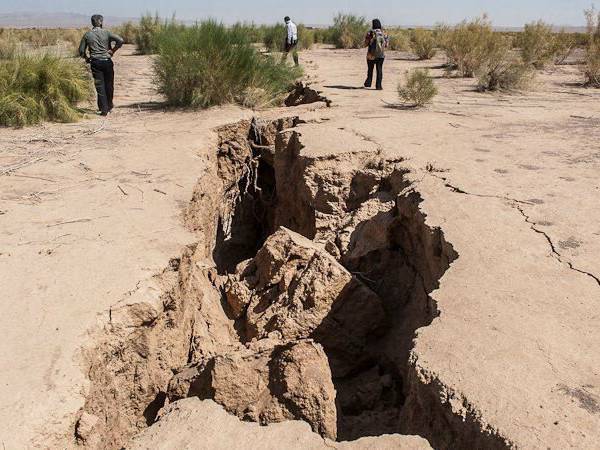Groundwater depletion in Iran is approaching a critical threshold, a detailed new study has found, leading to the subsidence of broad swaths of land across the country.
Satellite imagery highlights cracks and sinkholes emerging in various regions, with parts of Iran sinking at a rate of over 10 centimeters per year due to the excessive tapping of groundwater.
According to researchers cited by the Guardian on Wednesday, it could take hundreds if not thousands of years for the water resources to be naturally replenished.
Mahmud Haghighi and Mahdi Motagh from Leibniz University in Germany analyzed satellite data collected between 2014 and 2020 to assess the impact of groundwater extraction in Iran.
The findings, published in Science Advances, indicate that 3.5% of Iran’s land area is experiencing significant subsidence primarily due to the overuse of groundwater for irrigation. This subsidence is not only affecting agricultural regions but also infrastructure, including airports, roads, and railways.
Among the hardest-hit areas is Kerman province, located in southeastern Iran, which is known for its pistachio production. In this region, subsidence rates exceed 35 centimeters annually, posing a threat to both the local economy and the safety of the area’s infrastructure.
Depletion of groundwater has far-reaching consequences, contributing to the increasing number of sinkholes and land cracks that have begun to impact cities across the country.
In the city of Gorgan in northern of Iran, ground subsidence caused a sinkhole to open up, swallowing two vehicles. Witnesses described how the ground suddenly gave way, creating panic among those nearby but no injuries.
A similar incident occurred at another location in the city only days earlier.
The Guardian reports that Iran’s rate of land subsidence ranks among the highest in the world, with experts warning that the damage in some regions may be irreversible due to the complete collapse of aquifers. The extraction of groundwater is pushing the country, home to nearly 90 million people, towards an escalating water crisis.
“There is an urgent need for immediate action and a coherent groundwater policy,” said Motagh, stressing the importance of finding solutions before the problem becomes completely unmanageable.
Last year, reports emerged indicating that the Iranian government had withheld information regarding the worsening subsidence issue.
In March, Iranian experts described the land subsidence situation as "critical," warning that it endangers the lives of over 39 million people.
Contributing factors include dam construction, climate change, inefficient water usage in agriculture and industry, and the over-extraction of underground aquifers through illegal agricultural wells. These issues now pose a significant risk to millions across the country.
